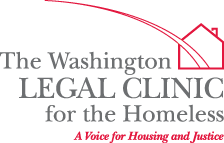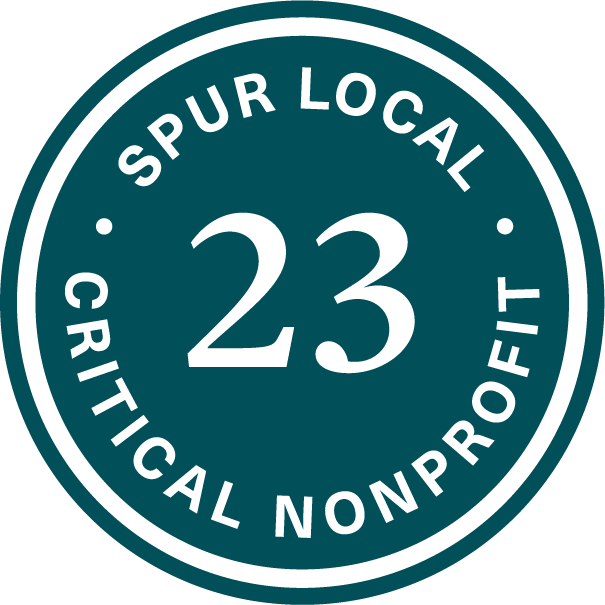By Ann Marie Staudenmaier, Washington Legal Clinic for the Homeless Staff Attorney
NOTE: The Senate Committee on the Judiciary, Subcommittee on Crime and Drugs, has scheduled a hearing entitled “Crimes Against America’s Homeless: Is the Violence Growing?” for Wednesday, September 29, 2010 at 10:00 a.m. in Room 226 of the Dirksen Senate Office Building.
It’s open season these days in Georgetown, and I’m not talking about the federal health plans. Instead, the specter of anti-homeless police activity is rearing its ugly head in one of D.C.’s top tourist destinations once again, just as it did more than 10 years ago when WLCH first started monitoring police-homeless relations. If you look like a homeless person (fill in stereotype here), keep your head up, because the police may be looking for you.
This recent activity, which involves Metropolitan Police Department (MPD) Officers who are targeting people panhandling in the heart of Georgetown’s business district, is just a symptom of a larger problem, what is known as “criminalization of homelessness.” This issue isn’t confined to Georgetown, or even to Washington, DC. In fact, in the National Law Center on Homelessness and Poverty’s semi-annual report documenting anti-homeless efforts by cities across the country, D.C. has never made the list of the Top 10 “meanest” cities. However, our city and its police force does have a long and troubled history with regard to treatment of its most vulnerable citizens, those who are homeless. Because of their circumstances and their visibility, our homeless neighbors are far more likely than the average resident to come into contact with the police, and not necessarily for breaking the law.
When MPD officers in Georgetown created a unit known as the “HOT (Homeless Outreach Team) Squad” more than a decade ago, its goal was supposedly to do outreach to homeless individuals in the area. The squad’s operating manual, however, told a different story. In it, officers were instructed to ticket or arrest homeless persons for activity which allegedly violated various public space regulations, including such amorphous violations as “storage on public space” and “temporary abode.” Our research revealed that such laws dated back to the 1800s, and were clearly intended to regulate commercial activity, not personal behavior. Our subsequent meetings with MPD lead to the creation of a mandatory training program for all MPD Recruit classes, called “Homelessness 101”, which is still in place to this day. When I first began conducting those trainings 10 years ago, I was pleasantly surprised at the level of interest and compassion shown by the majority of trainees. Just like the police sometimes stereotype people who are homeless, I held my own stereotypes about the police, which have largely been dispelled by my positive training experiences over the past decade.
So why do criminalization efforts persist, and what else can be done to make the all too frequent interactions between the police and those who are homeless more positive? There are several reasons why the police tend to target persons who are or appear to be homeless. As the economy has continued to spiral downward, the numbers of homeless people pouring onto our city’s increasingly gentrified streets has overwhelmed the homeless services system. The result is more people literally living on the streets, or forced outdoors when their overnight emergency shelter closes each day. With nowhere to go but the District’s public spaces, they are far more likely to attract police attention, whether it be for panhandling, sleeping, or simply having too many large bundles in their possession. The mere presence of this sometimes unsightly population often causes heartburn for business owners and neighborhood activists alike, and the typical response is to call the police, whether or not the law has been broken. In response to this pressure, the police will sometimes do whatever it takes to “encourage” a homeless person to leave the area, through such tactics as demanding to see ID or search bags, or ordering the person to “move on” or face arrest, even if no laws have been broken.
But “move on” to where? Most homeless individuals in the District, just like the rest of its residents, tend to hang out in particular neighborhoods, whether or not they have a permanent residence there. They often don’t have anywhere else to go, and the obvious alternatives, such as fast food restaurants and libraries, have in recent years gone to great lengths to prevent homeless people from hanging out there. Legally, a homeless person has just as much right to stand or sit in public space as the next person, as long as they aren’t engaging in illegal activity. However, these rights are often disregarded by those in positions of authority, whose goal is to “clean up the streets”, while acquiescing to the demands of businesses and “concerned citizens” who didn’t count on homeless neighbors when they moved into a revitalized Washington, DC.
Change can and must begin with the police. The pressure from tourist groups, Business Improvement Districts, and neighborhood activists is formidable, to be sure. But the law is often on the side of the homeless persons who are the source of such antipathy. D.C.’s anti-loitering law was declared unconstitutional in the 1960s, yet police officers often accuse homeless individuals of “loitering” when they have no other infraction to rely on. The outdated public space laws which were intended to regulate commercial activity are once again being used to improperly ticket or arrest people who are sitting or sleeping in public. And the police frequently threaten to arrest panhandlers, despite the fact that, as long as it’s not aggressive, panhandling is constitutionally protected speech.
In a 2008 survey, 25% of a group of homeless singles in D.C. reported being the victim of a hate crime based solely on their homelessness. With the rise in popularity of internet trash such as “Bum Fights,” this statistic is alarming, but unfortunately not that surprising. In the same survey, 34% said that they had been a victim of a violent crime while homeless. These statistics paint a troubling picture of what it’s like to be homeless in Washington, DC, and undermine the perception that homeless persons are far more likely to commit crimes than to be crime victims. If the police joined with social services, businesses and neighborhoods to focus on connecting homeless persons to resources to help get them off the streets, instead of dragging them into the criminal justice system, we might have a better chance of addressing the real crime that continues to plague our city. Until this happens, however, true “Justice for All” in the Nation’s Capital will be nothing more than a pipe dream.





